Click on images to enlarge
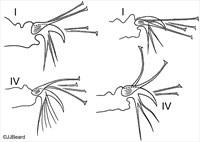
Fig. 1. Oligonychus ephamnus adult female paratype - variation in empodium I and IV.
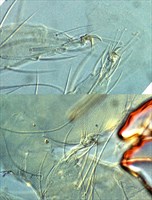
Fig. 2. Oligonychus ephamnus adult female paratype - detail of claw I.
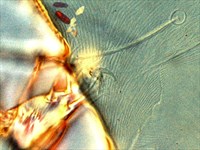
Fig. 3. Oligonychus ephamnus adult female paratype - detail of claw II.
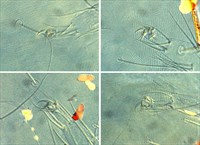
Fig. 4. Oligonychus ephamnus adult female paratype - detail of claw III.
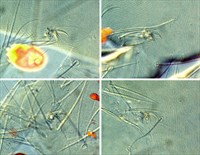
Fig. 5. Oligonychus ephamnus adult female paratype - detail of claw IV.
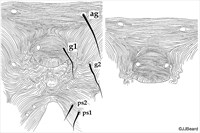
Fig. 6. Oligonychus ephamnus adult female paratype - detail of the pattern of pregenital striae - irregular oblique (left), and transverse (right).
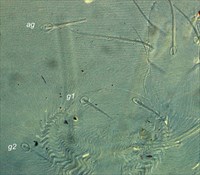
Fig. 7. Oligonychus ephamnus adult female paratype - detail of the pattern of pregenital striae - oblique.
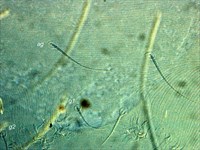
Fig. 8. Oligonychus ephamnus adult female paratype - detail of the pattern of pregenital striae - transverse.
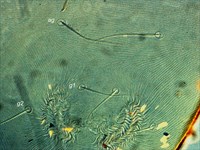
Fig. 9. Oligonychus ephamnus adult female paratype - detail of the pattern of pregenital striae - irregular oblique.
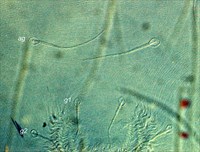
Fig. 10. Oligonychus ephamnus adult female paratype - detail of the pattern of pregenital striae - irregular oblique and longitudinal.

Fig. 11. Oligonychus ephamnus adult female paratype - detail of the peritreme.
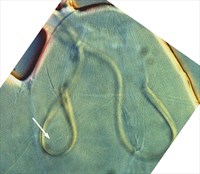
Fig. 12. Oligonychus ephamnus adult female paratype - detail of the peritreme.

Fig. 13. Oligonychus ephamnus adult female paratype - detail of the pattern of dorsal striae between setae f1 and f2.
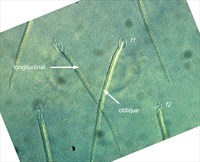
Fig. 14. Oligonychus ephamnus adult female paratype - detail of the pattern of dorsal striae between setae f1 and f2.
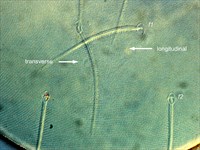
Fig. 15. Oligonychus ephamnus adult female paratype - detail of the pattern of dorsal striae between setae f1 and f2.
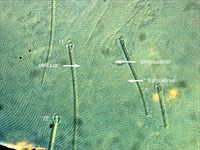
Fig. 16. Oligonychus ephamnus adult female paratype - detail of the pattern of dorsal striae between setae f1 and f2.
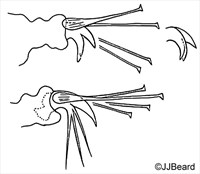
Fig. 17. Oligonychus ephamnus adult male holotype - empodium I (top) & IV.
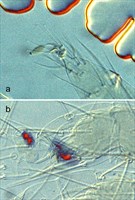
Fig. 18. Oligonychus ephamnus adult male - detail of claw I - a. holotype; b. paratype (pharate).
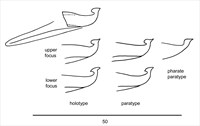
Fig. 19. Oligonychus ephamnus adult male - detail of the aedeagus of holotype and paratypes.
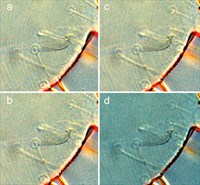
Fig. 20. Oligonychus ephamnus adult male holotype - detail of the aedeagus of holotype (at different focal points).
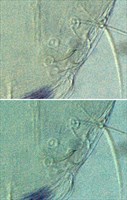
Fig. 21. Oligonychus ephamnus adult male paratype - detail of the aedeagus, at two focal points. This specimen is pharate and appears to have a less developed anterior projection, when compared with that of the holotype.
Material examined
types
Taxonomy
Subfamily Tetranychinae
Tribe Tetranychini
Distribution
*Australia: Kimberley Region, north Western Australia
Taxonomy Changes
None
Diagnosis
Female
- empodia I-IV = curved claw, obviously shorter than proximoventral hairs (Figs 1-5)
- tarsus I with the sockets of four tactile setae proximal to, AND one solenidion adjacent to, the socket of the proximal duplex seta
- pregenital striae variable - irregular, entirely transverse, or irregular oblique and longitudinal (Figs 6-10)
- peritreme ending in slightly expanded tip (Figs 11, 12)
- most dorsal striae transverse, except irregular longitudinal and oblique between opisthosomal setae f1 and f2 (Figs 13-16)
- lobes on dorsal striae small, obvious, semicircular
- lobes on ventral striae oblong
- spinneret of palp short, broad, about as long as wide
- chaetotaxy for legs I-IV:
- femora 10, 6, 4, 4
- genua 5, 5, 4, 4
- tibiae 10(1+0), 6, 5, 6
- pale green with white legs often with green tinge, dark green to black food spots on either side of body
Male
- empodium I = bifid claw, ventral claw longer than dorsal spur/claw (Figs 17, 18)
- empodia II-IV with stout dorsal claw shorter than proximoventral hairs (Fig. 17)
- tarsus I with the sockets of four tactile and two solenidia proximal to the socket of the proximal duplex seta
- peritreme ending in simple bulb, slightly expanded (Figs 11, 12)
- spinneret of palp one and half times longer than wide
- chaetotaxy for legs I-IV:
- femora 10, 6, 4, 4
- genua 5, 5, 4, 4
- tibiae 13(4+0), 6, 5, 6
- aedeagus shape changes with focal point
- dorsally directed with distinct knob; anterior projection of knob broadly rounded at one focal point, short sharp triangular at another focal point; posterior projection short sharp triangular, narrow to broad at different focus; dorsal margin of knob convex at one focal point, or convex with median indentation at another focal point; dorsal margin of shaft parallel or at slight angle to ventral margin of shaft (Figs 19-21)
- pale green with yellow tinge, darker green food spots dorsally, and legs yellow
Hosts
*Chrysopogon sp. (Poaceae)
Similar Taxa
Oligonychus pratensis Banks
References
*Beard, J.J., Walter, D.E. and Allsopp, P.G. (2003) Spider mites of sugarcane in Australia: a review of grass-feeding Oligonychus Berlese (Acari: Prostigmata: Tetranychidae). Australian Journal of Entomology 42: 71-78
Notes
After examining these specimens again, with a different microscope, the interpretation of the aedeagus presented here is quite different to that in the original description in Beard et al. (2003).
Copyright © 2018. All rights reserved.